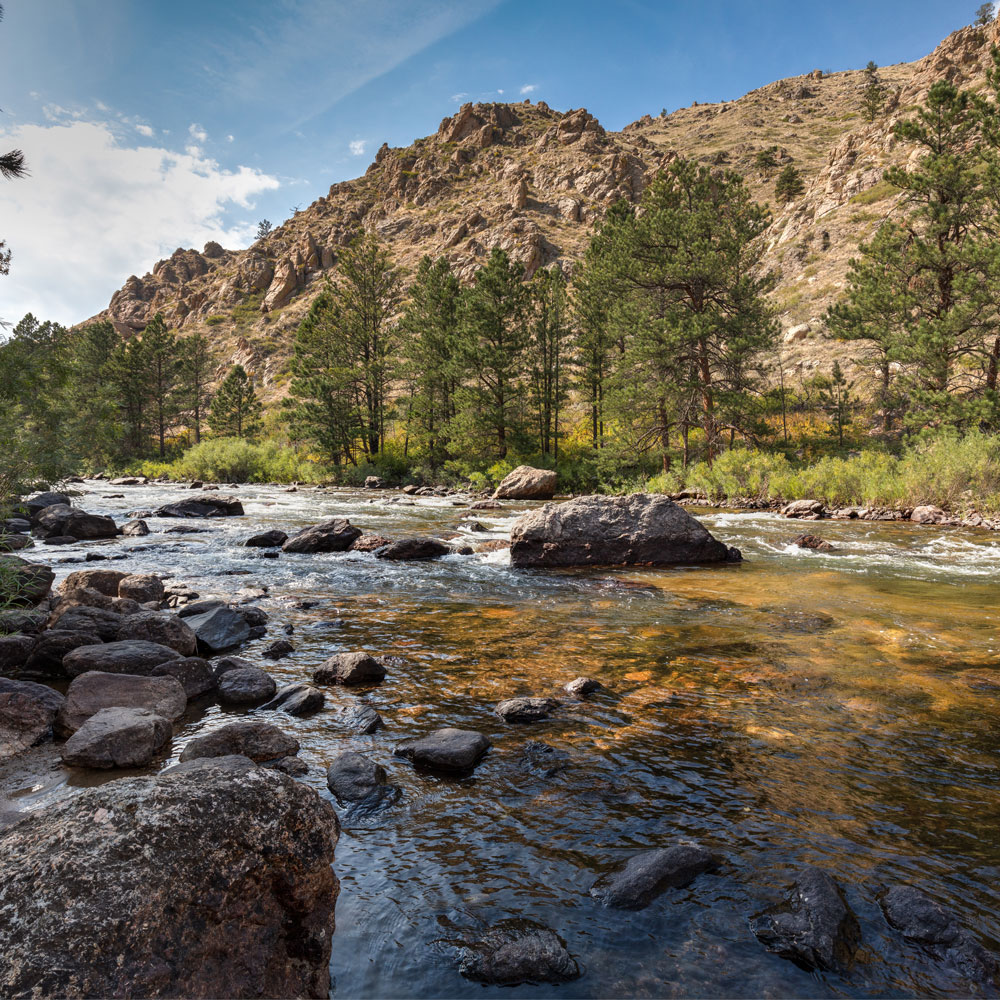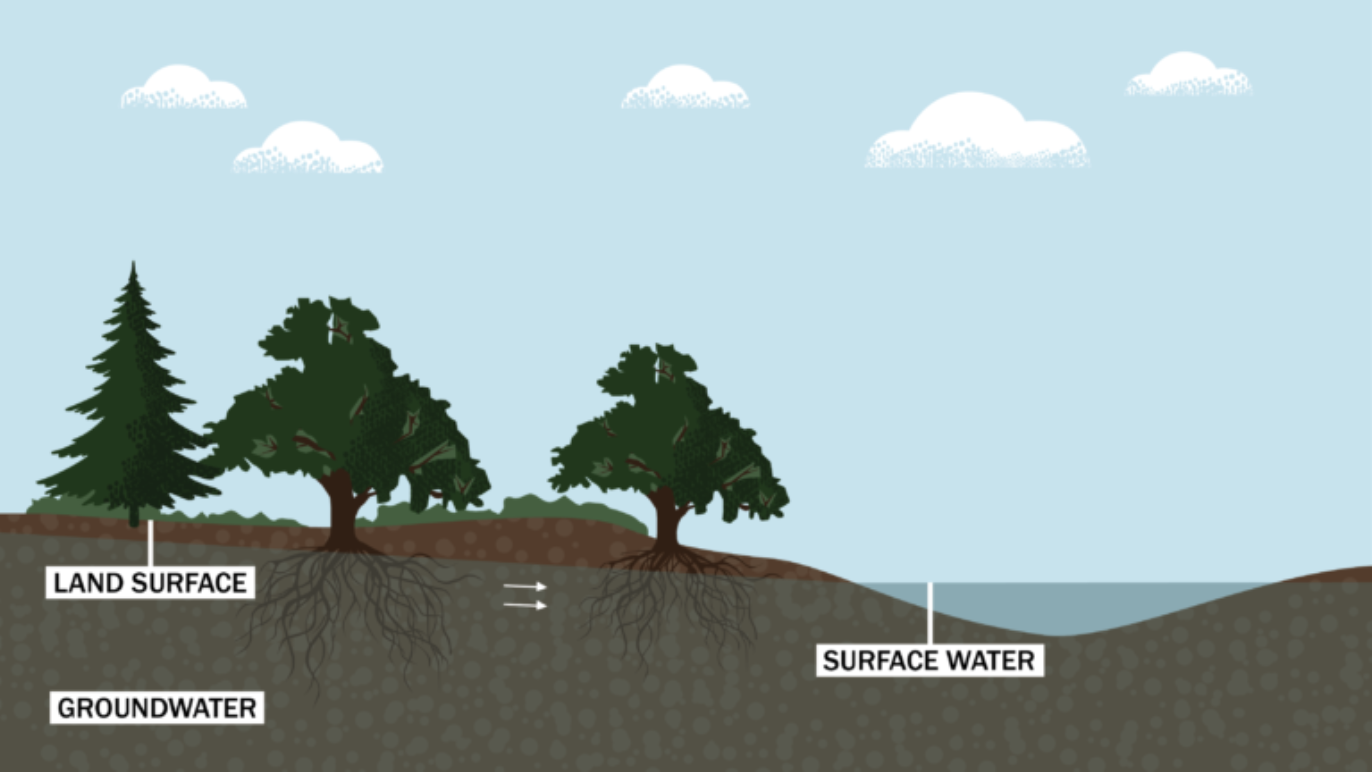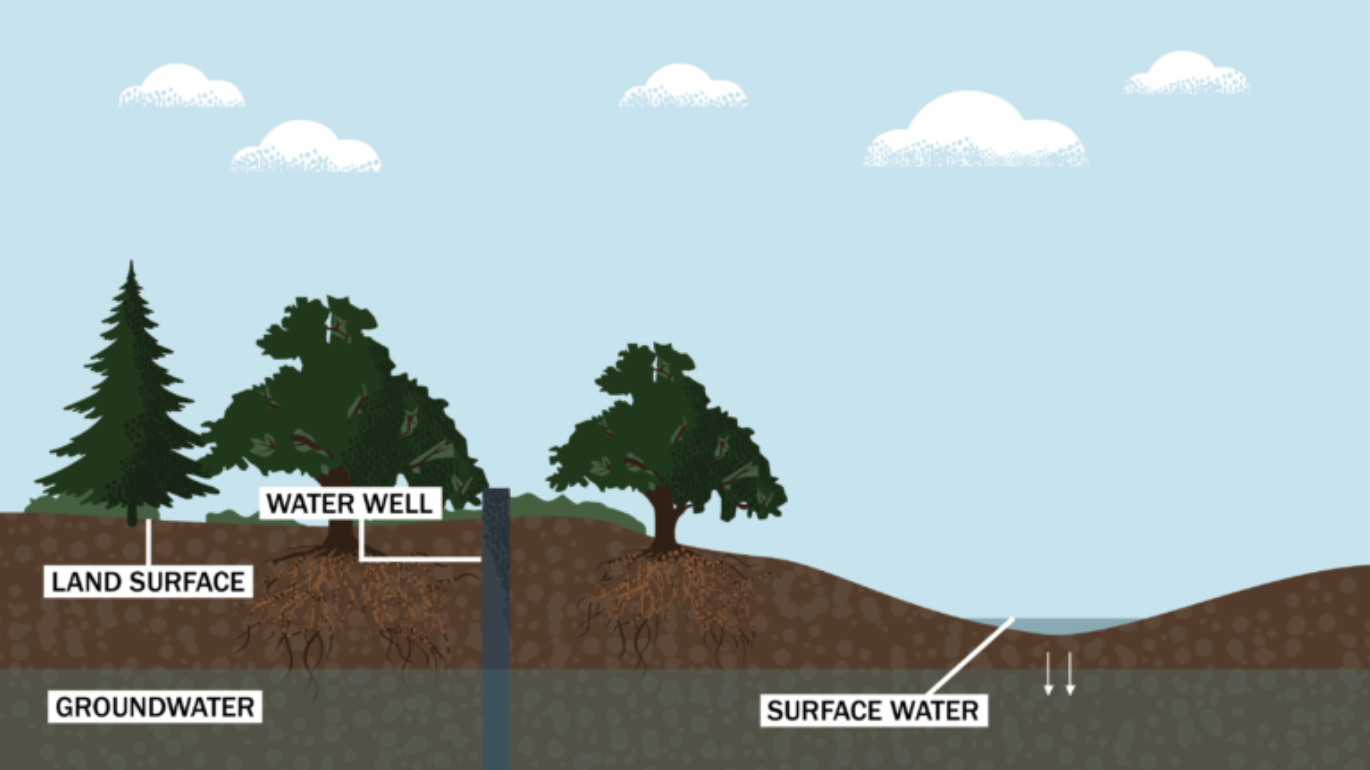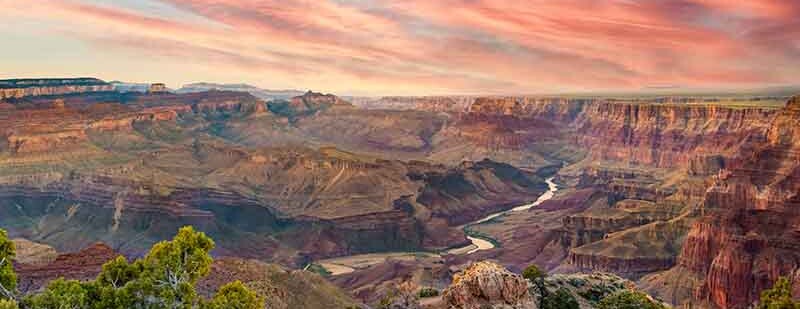
What is groundwater?
Groundwater is water found in pores, cracks, and crevices in silt, sand, and gravel deposits below the land surface. It collects beneath the ground in all kinds of environments in Arizona.
In many areas of the state, groundwater forms when rain or snow falls on a natural landscape and infiltrates or makes its way vertically underground. The water then collects in an aquifer — a layer of underground sand, gravel, and/or rock where the geologic material is saturated. Some groundwater is fed by annual precipitation. In some places, large volumes of water may accumulate over millions of years. Groundwater also occurs when water infiltrates fractures located in impermeable, hard rock mountainous regions of the state.
How is groundwater connected to surface water?
When water seeps below the land surface and works its way down, it can also travel parallel to the ground and reemerge as water flowing in a stream channel. Groundwater contribution to the flow of a stream is called baseflow.
Baseflow from groundwater to streams is very sensitive to changes in groundwater levels. When groundwater is pumped, it lowers water levels in aquifers even far away from the well. While the largest declines are near the pumping site, they radiate outward in every direction, similar to drinking a smoothie with a straw. In this way, streams can be impacted both by nearby well pumping and by regional declines in aquifer water levels caused by over-pumping miles away.


Impacts of Over-pumping Groundwater on Rivers.
As groundwater is pumped and water levels are drawn down, it can influence the interconnection between groundwater and surface water by decreasing baseflow or even reversing the flow, leading to rivers and streams losing water and drying up.
Groundwater Work in Arizona
Currently, WRA’s groundwater work focuses on resources in Arizona. It is a vital water supply in the state, making up about 40% of the water used annually. Groundwater is the primary, and often times only, water supply available to many rural communities and the source of year-round flow to most rivers, streams, and springs.
Yet, in much of rural Arizona, home to 1.5 million people and encompassing about 80% of the state’s landmass, groundwater is largely unmanaged. Outside of designated Active Management Areas (AMAs), Irrigation Non-Expansion Areas (INAs), and sovereign tribal lands, there are few restrictions on groundwater pumping.
AMAs are specific areas in which groundwater is managed by the Arizona Department of Water Resources according to a framework established in the 1980 Arizona Groundwater Code. There are currently five AMAs in Arizona, mostly in the central and south-central parts of the state: Prescott, Phoenix, Pinal, Tucson, and Santa Cruz. In INAs, no new irrigated acreage can be brought into production following the creation of the INA. There are three INAs in Arizona: Joseph City, Douglas, and Harquahala.
Unregulated Groundwater Basins
No AMAs or INAs exist in these areas and groundwater is largely unmanaged.
These areas were designated as such because of severe groundwater overdraft, a condition where groundwater is pumped faster than it is replaced naturally. Groundwater overdraft can cause serious consequences including loss of future water supply, increased costs of well drilling, and land subsidence where the earth’s surface sinks, or “subsides”, causing fissures that can damage roads and buildings. In areas where nearby streams or springs occur, groundwater depletion can interrupt the water flowing into connected rivers, streams, and springs.
WRA, in partnership with other conservation organizations, is committed to protecting groundwater and finding solutions to Arizona’s water challenges. We are working with water users and stakeholders throughout the state to educate residents on the source of their water supply and to advance local management tools to help secure communities’ water future and groundwater dependent ecosystems.

Why is protecting groundwater important in Arizona?
It is crucial that we protect groundwater, especially as increasing population, aridification, and a warming climate have put Arizona’s water supplies at risk.
It is a vital — and often the only — water supply for communities across Arizona, providing drinking water for residential and municipal uses, water for farming, and water for other business and economic activities. Groundwater also feeds Arizona’s springs, rivers, and streams, all of which are invaluable ecosystems that provide lush habitat for fish and wildlife, opportunities for recreation as well as essential economic drivers across many industries.
But in much of the state groundwater resources are unprotected. Outside of AMAs, groundwater can be pumped without concern for decreasing water levels in aquifers or flow in groundwater-fed streams.
Arizona is now seeing the consequences from pressures of unrestricted groundwater use:
- In many areas of the state, declining flows in rivers, streams, and springs have harmed riparian habitat and impacted surface water right uses.
- The Santa Cruz River near Tucson, historically flowing year-round through most of its reach has mostly dried up due to groundwater pumping, impacting wetland habitat and small forests dependent on the river. Most of these impacts occurred prior to the 1980 Groundwater Code. Now the river only flows for a few days in response to rainfall or seasonally, although some segments of year-round flow occur as a result of wastewater treatment plant discharges.
- In the Verde River valley, Del Rio Springs now produces only a tenth of its predevelopment flow. Historically, the springs filled four miles of Little Chino Creek before joining Big Chino Wash to form the headwaters of the Verde River. That perennial riparian habitat is now gone, destroyed by groundwater mining.
- Homeowners’ wells are going dry in some rural areas due to overuse of groundwater and declining aquifer water levels. Households in La Paz County and Cochise County, among other locations, have seen wells dry up that they depend on for everyday water use.
- Large new agricultural uses are taking advantage of the absence of groundwater use restrictions, threatening local, finite water supplies. In 2019, The Arizona Republic identified seven large agricultural water users that “own more than 700 wells and collectively have drilled more than 200 wells deeper than 1,000 feet, allowing them to drawdown aquifers more quickly and dry up shallower wells.”
- Severe groundwater depletion can cause land subsidence where the land surface sinks or causes cracks or fissures to open up, damaging roads, building foundations, and other structures.
What are the available groundwater protection policy tools
Groundwater conservation tools have been developed around the West to protect basins at risk and to meet community needs. Because each community across the region has different challenges, communities will need a handful of tools – tailored to their unique needs – to protect groundwater and improve water security.
A wide array of management tools can be introduced to counties and local advisory councils to meet their unique water supply challenges and to allow communities to steward their resources for the future. Here are a few examples:
- Create a local program to build and manage infrastructure to recharge aquifers, add water back to rivers and streams, and to allow water users to store water underground for later use.
- Provide funding for voluntary, compensated land and water conservation plans to conserve and replenish groundwater supplies.
- Restrict large new wells that will unreasonably impact a community’s drinking water supplies or sensitive environmental areas, or that are likely to cause unreasonable declines in the water levels in neighboring wells.
- Form water conservation programs that apply to those who withdraw, distribute, or receive groundwater to achieve reductions in groundwater usage.
- Establish programs that allow large new groundwater uses to be “offset” through reductions in water use nearby, or through projects to replenish the aquifer in order to stabilize local water levels.
For additional examples of possible tools, see the Water for Arizona Coalition’s guide to “Tools for Local Groundwater Management.” Western Resource Advocates partners with four other conservation organizations to provide support to the Water for Arizona Coalition.

